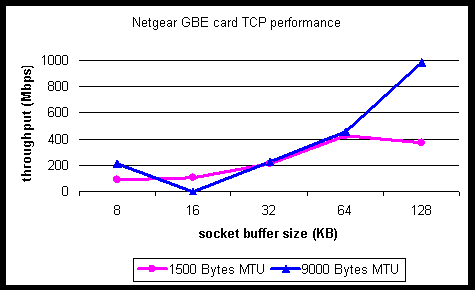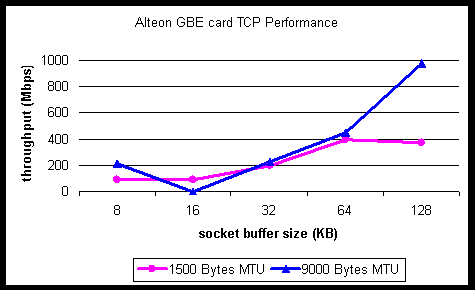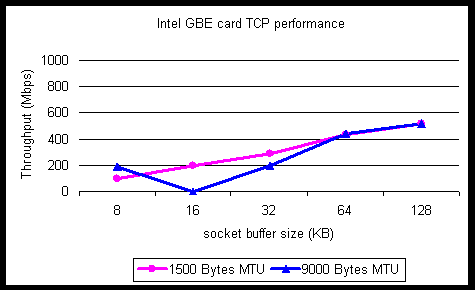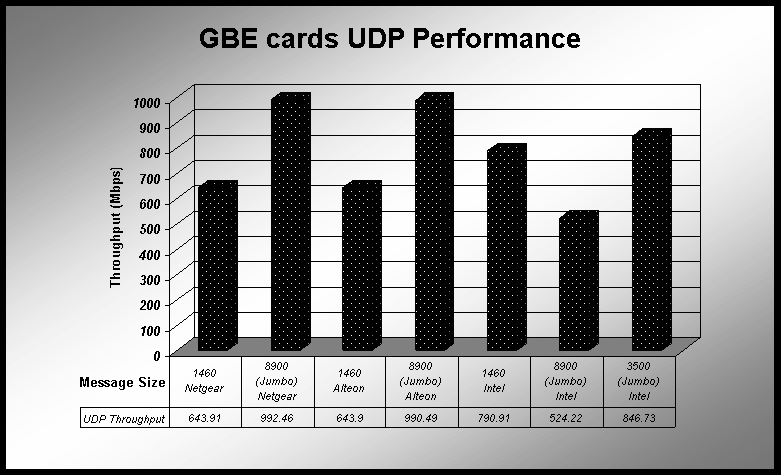 Fig 1 Netgear GBE card TCP Performance
Fig 1 Netgear GBE card TCP PerformancePerformance Comparison of 3 Gigabit Ethernet Cards
-- Netgear, Alteon and Intel
Eric He
July 9, 2001
In these series of experiments, I use Netperf 2.1pl3 as the measurement tool. Two same gigabit ethernet cards are installed into two same machines and connected directly by optical link. The configuration of the machine is:
TCP Performance
First set of experiments is TCP performance test. Basically I changed the socket buffer size of the sender and the receiver. Each time, the message size is same as the socket buffer size. Then the throughput is recorded. For each pair of cards, regular MTU (1500 bytes) and jumbo MTU (9000 bytes) are tested.
 Fig 1 Netgear GBE card TCP Performance
Fig 1 Netgear GBE card TCP Performance
 Fig 2 Alteon GBE card TCP Performance
Fig 2 Alteon GBE card TCP Performance
From Fig 1 and Fig 2 we can see the two kinds of cards have very similar performance. Thatís because they have same chipset and driver. When 128 KB socket buffer size is used and jumbo frame is enabled, these cards can reach nearly 1Gbps throughput. A weird thing you can notice is that when 16 KB socket buffer size is used and jumbo frame is enabled, the throughput is almost 0. I donít know how to explain it.
 Fig 3 Intel GBE card TCP Performance
Fig 3 Intel GBE card TCP Performance
From Fig 3, we can see that jumbo frame does not help for Intel cards. But in regular frame case, the performance is little better than other 2 cards.
UDP Performance

Fig 4 UDP performance of GBE cards
The UDP result is similar to TCP result. For Netgear and Alteon cards, jumbo frame mode push the throughput to near 1Gbps, but for Intel card, jumbo frame does not help. However, in the case of regular frame, Intel cards have better performance. We noticed another weird phenomenon of Intel cards. When jumbo frame is enabled, we got better throughput when the message size is 3500 than 8900 bytes. I donít know how to explain too.